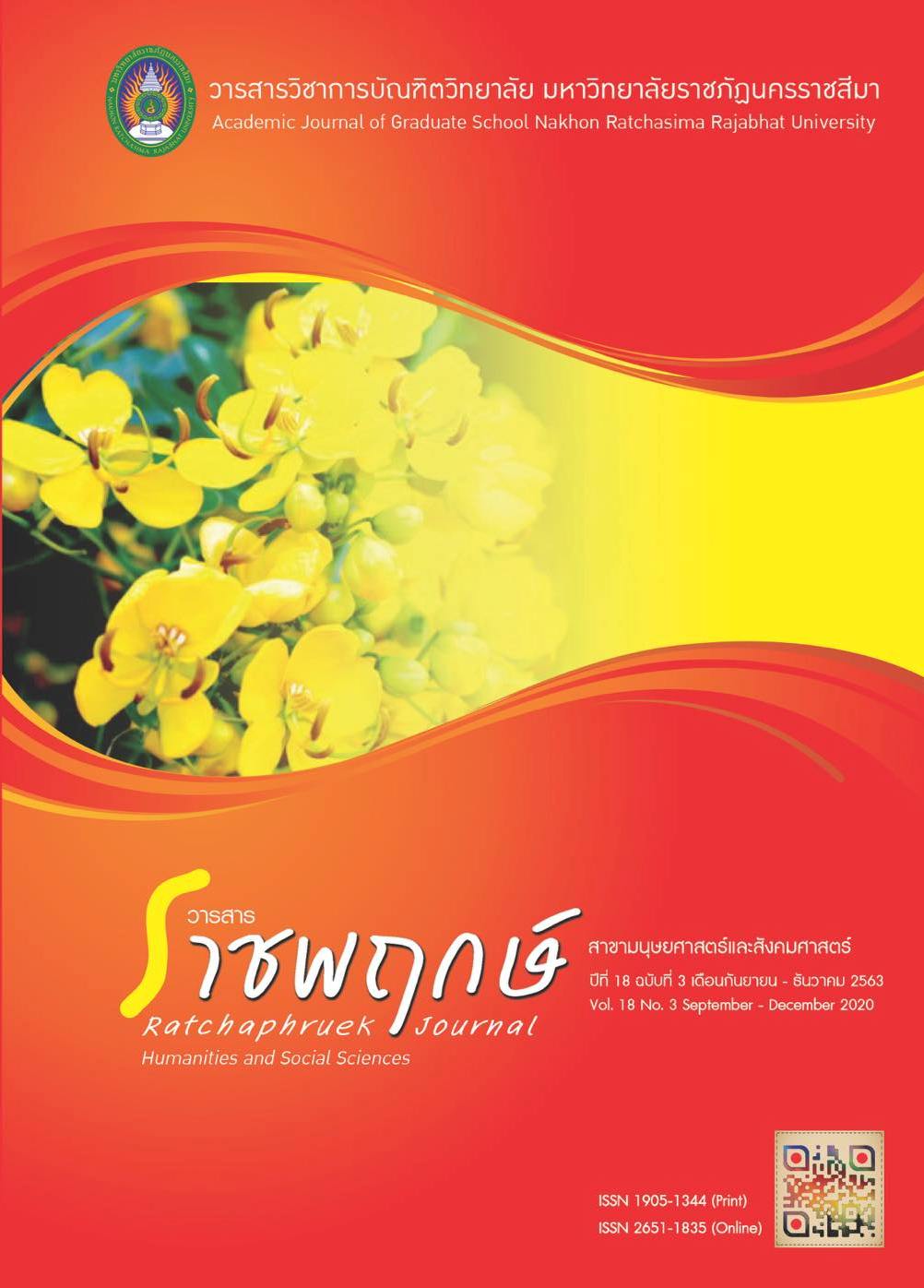Development of Item Specifications for Scientific Competency in Physics for Mathayomsuksa 5 Students
Main Article Content
Abstract
The purposes of this research were 1) to develop and verify the qualification of the item specifications for scientific competency in physics, and 2) to develop and verify the quality of the item scientific competency in physics subject. The sample consisted of 362 students in The Secondary Educational Service Area Office 1 by multi stage sampling. The instruments used were the evaluation form to evaluate the item specifications for scientific competency in physic, the assessment form, physics and the test for scientific competency. The research findings were as follows: 1) Item specifications include main behavior, sub behavior, learning unit, learning indicators, the purpose, test form, the question style, the correct answer, and the sample test.The quality of the item specifications in terms of accuracy, suitability and probability was in the high level. 2) The quality of item scientific competencies 35 item was shown by content validity with IOC indices ranged from 0.60 to 1.00, indices of difficulty ranged from 0.20 to 0.72, discrimination power ranged from 0.32 to 0.91 reliability scale was 0.940 and construct validity by considering from the exam scores between groups was the group with high scientific competencies had higher average scores than those with low scientific competencies was which statistically significant difference at .05 levels.
Article Details
References
2. กุลจิรา ฝุ่นวัง. (2561). การสร้างลักษณะเฉพาะของข้อสอบวัดผลสัมฤทธิ์ทางการเรียน กลุ่มสาระการเรียนรู้คณิตศาสตร์ ชั้นประถมศึกษาปีที่ 1. วารสารศึกษาศาสตร์ มหาวิทยาลัยบูรพา, 29(3), น. 174-189.
3. เจษฎา ชมชื่น. (2553). การพัฒนาลักษณะเฉพาะของข้อสอบวัดความสามารถในการวิเคราะห์ กลุ่มสาระการเรียนรู้วิทยาสตร์ สำหรับนักเรียนชั้นมัธยมศึกษาปีที่ 3. (วิทยานิพนธ์ปริญญามหาบัณฑิต, มหาวิทยาลัยเชียงใหม่).
4. ณัฐพล สิทธิกุล. (2560). การพัฒนาคุณลักษณะเฉพาะของข้อสอบและแบบสอบการรู้เคมีสำหรับนักเรียนชั้นมัธยมศึกษาตอนปลาย. (วิทยานิพนธ์ปริญญามหาบัณฑิต, จุฬาลงกรณ์มหาวิทยาลัย).
5. ประสพชัย พสุนนท์. (2558). ความเที่ยงตรงของแบบสอบถาม สำหรับงานวิจัยทางสังคมศาสตร์. วารสารสังคมศาสตร์ มหาวิทยาลัยศรีนครินทรวิโรฒ, 18(1), น. 375-396.
6. สถาบันส่งเสริมการสอนวิทยาศาสตร์และเทคโนโลยี. (2555). การวัดและประเมินผลวิทยาศาสตร์. กรุงเทพฯ: ซีเอ็ดยูเคชั่น.
7. ศิริชัย กาญจนวาสี. (2556). ทฤษฎีการทดสอบแบบดั้งเดิม ( พิมพ์ครั้งที่ 7). กรุงเทพฯ: สำนักพิมพ์แห่งจุฬาลงกรณ์มหาวิทยาลัย.
8. ศิริณกาญจน์ ภูมิรัง. (2555). การสร้างแบบทดสอบวินิจฉัยโดยวิธีกำหนดลักษณะเฉพาะของข้อสอบ กลุ่มสาระการเรียนรู้คณิตศาสตร์ เรื่องความน่าจะเป็น ชั้นมัธยมศึกษาปีที่ 5. (วิทยานิพนธ์การศึกษามหาบัณฑิต, มหาวิทยาลัยมหาสารคาม).
9. สุเทพ สันติวรานนท์. (2533). การกำหนดลักษณะเฉพาะของข้อสอบ. สงขลา: คณะศึกษาศาสตร์ มหาวิทยาลัยสงขลานครินทร์.
10. อนันดา สัณฐิติวณิชย์. (2556). การพัฒนาลักษณะเฉพาะของแบบสอบที่บูรณาการระหว่งตัวชี้วัดความสามารถ ด้านการอ่าน การคิดวิเคราะห์ และการเขียน กับตัวชี้วัดการประเมินสาระการเรียนรู้: การประยุกต์ใช้ทฤษฎีการตอบสนองข้อสอบแบบพหุมิติ. (วิทยานิพนธ์ปริญญามหาบัณฑิต, จุฬาลงกรณ์มหาวิทยาลัย).
11. ฮิวจ์ เดลานี. (22 เมษายน 2562). การศึกษาสำหรับศตวรรษที่ 21. Unicef. สืบค้นเมื่อวันที่ 20 กรกฎาคม 2562, จาก https://www.unicef.org/thailand/th/stories/การศึกษาสำหรับศตวรรษที่-21.
12. Florida Department of Education. (2012). FCAT 2.0 Test Item Specifications. Retrieved July 20, 2019, from http://www.fldoe.org/accountability/assessments/k-12-student-assessment/archive/fcat-2-0/test-items-specifications.stml.
13. Heather P. Wright. (2012). New Test Item Specifications for High School Courses. Retrieved July 20, 2019, from https://www.doe.in.gov/assessment/ilearn-test-design.
14. Indiana Department of Education. (2018). ILEARN Test Design. Retrieved July 20, 2019, from https://www.doe.in.gov/assessment/ilearn-test-design


